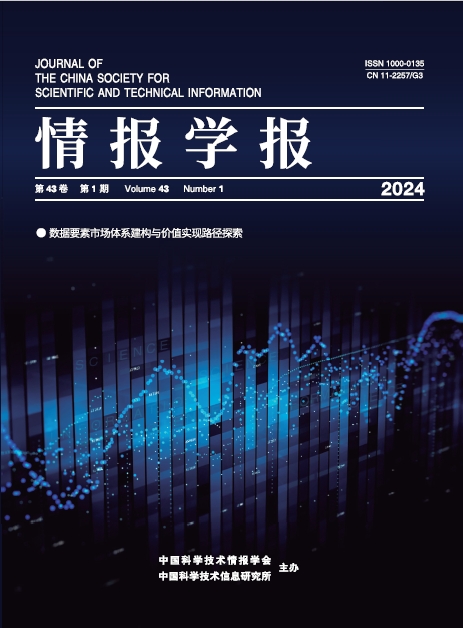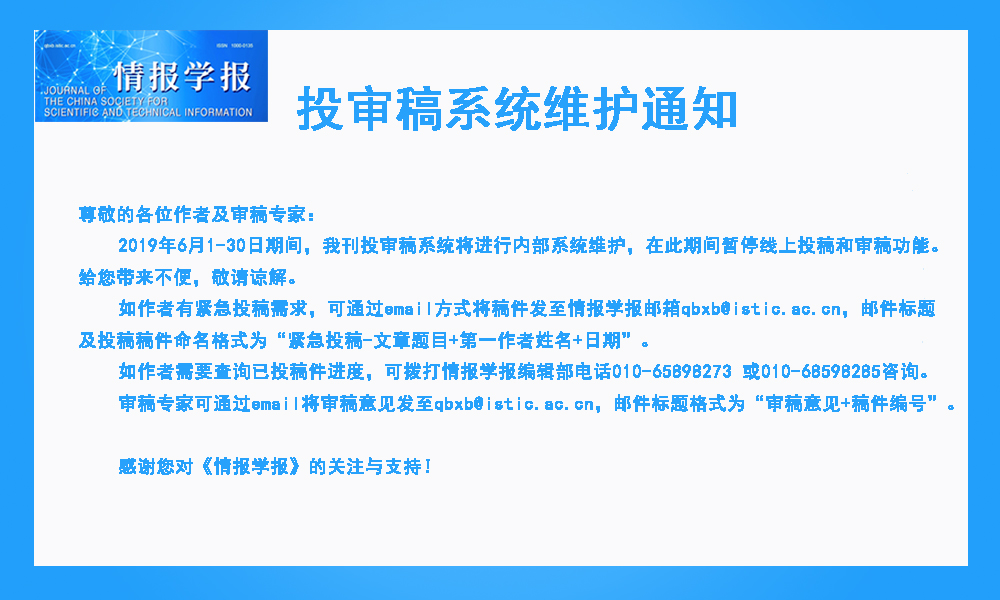 |
|
|
|
|
|
|
|
|
1 |
System Construction and Value Realization Paths of Data Factor Markets Hot! |
|
 |
Sun Jianjun, Ba Zhichao, Xia Yikun |
|
|
DOI: 10.3772/j.issn.1000-0135.2024.01.001 |
|
|
The top-level design of the data factor market system (DFMS) is the prerequisite foundation and key deployment for accelerating the market-oriented allocation of digital factors and promoting the high-quality development of China’s digital economy. To analyze the bottlenecks and challenges faced in building a unified DFMS, this paper first inspects several special characteristics of DFMS construction. Furthermore, we propose overall architectural ideas of a national unified DFMS with “one body, two wings, three bases, and seven points” and a deployment plan of strategic, structural, and spatial layouts. Meanwhile, by dissecting the new features of DFMS, characterizing its internal structures, and revealing its associations with the traditional factor market, we explore value realization paths to promote the high-quality development of DFMS. Our research can provide a reference to achieve sustainable operations of data resourcing, data assetization, and data capitalization. |
|
|
2024 Vol. 43 (1): 1-9
[Abstract]
(
277
)
HTML
(78 KB)
PDF
(1724 KB)
(
764
) |
|
|
| Intelligence Theories and Methods |
|
|
10 |
Identification Method of Innovation Driving Relationships among Science, Technology, and Industry from the Perspective of the Knowledge Network Hot! |
|
 |
Wang Chao, Xu Haiyun, Qi Yancui, Wu Huawei |
|
|
DOI: 10.3772/j.issn.1000-0135.2024.01.002 |
|
|
Research on the relationship between innovation drivers in science, technology, and industry is crucial for achieving deep and effective integration and development of scientific discovery, technological innovation, and industry. This study investigates innovation-driven relationships between science, technology, and industry through the lens of knowledge networks. First, a temporal knowledge network is constructed to capture the structural characteristics of the knowledge network using the concept of structural entropy in the community network. Subsequently, this study explores the relationship between the three systems of science, technology, and industry in the innovation process by analyzing the transfer entropy between the characteristic information of the network structure. Furthermore, the changing characteristics of the knowledge transfer path under the main driving relationship are examined using mutual information. Finally, empirical research focuses on the field of regenerative medicine (stem cells) to investigate how the mutual driving relationships among science, technology, and industry vary at different stages. This study also reveals different inheritance patterns of knowledge content on the knowledge transmission path among the three systems. In science-driven technology processes, the inheritance characteristics of the knowledge transfer path are consistently strengthened. However, in technology-driven science, the inheritance of the knowledge-transfer path is unstable and exhibits discontinuous characteristics. Moreover, this study demonstrates the scientific validity of the proposed method through various means and suggests its applicability in identifying innovation-driven relationships among science, technology, and industry in other innovation fields. |
|
|
2024 Vol. 43 (1): 10-24
[Abstract]
(
314
)
HTML
(159 KB)
PDF
(4187 KB)
(
428
) |
|
|
| Intelligence Technology and Application |
|
|
48 |
Integrating Multi-source Heterogeneous Online Reviews to Predict the Adoption of Ideas in Open Innovation Communities Hot! |
|
 |
Liu Jiayu, Li He, Shen Wang, Zhu Linlin, Li Shiyu |
|
|
DOI: 10.3772/j.issn.1000-0135.2024.01.005 |
|
|
Integrating internal and external innovation resources to gain market advantages has always been a concern of enterprises, because their innovation ability directly impacts their success or failure. In previous research, online reviews were used as a data source for predicting the adoption of ideas in open innovation communities, and such research mainly relied on a single text feature. Based on heuristic systematic persuasion theory, we propose a new predictive model for idea adoption in open innovation communities. Based on value co-creation theory and trust transfer theory, our model summarizes the definition of multi-source heterogeneous online reviews and describes creativity based on features at three levels: heuristic reviewer features, heuristic review features, and systematic review features. In addition, we introduce a graph attention network to realize the integration of the three levels of idea features. We then collected data sets from a real open innovation community, with which we verified the proposed model and its various characteristics. The comprehensive performance of the model in accurately predicting the adoption of ideas is about 97%. The results also show that the classification prediction results of the graph model with feature fusion are better than the traditional machine learning classification algorithm. These findings not only demonstrate the effectiveness of the graph model in feature fusion, but the integration of the features of reviews and reviewers also makes a methodological and theoretical contribution to the study of idea adoption. |
|
|
2024 Vol. 43 (1): 48-60
[Abstract]
(
241
)
HTML
(143 KB)
PDF
(1395 KB)
(
445
) |
|
|
|
61 |
Multi-view Fusion DJ-TextRCNN for the Theme Recommendation of Ancient Texts Hot! |
|
 |
Wu Shuai, Yang Xiuzhang, He Lin |
|
|
DOI: 10.3772/j.issn.1000-0135.2024.01.006 |
|
|
Progress in digital humanities research is hindered by issues such as low working efficiency, blurred boundaries of cataloging topics, excessive reliance on expert knowledge, lack of in-depth mining of the semantics of ancient texts, and difficulty in accurately recommending topics in the field of ancient texts by combining the characteristics of ancient book texts. In this regard, this study aimed to realize the accurate recommendation of text theme content that satisfies the needs of researchers on the basis of the characteristics of ancient book corpora. First, ancient book corpus data annotated by the research group in the early stage were selected for subject category labeling and view classification. Second, a semantic mining model integrating a pretrained BERT model and improved convolutional neural network, recurrent neural network, and multi-head attention mechanism was constructed. Finally, the multi-view semantic enhancement model of “subject-relationship-object” was integrated to construct the DJ-TextRCNN model to realize more fine-grained, deeper, and multi-dimensional semantic mining of classic texts. The DJ-TextRCNN model achieved the best accuracy of ancient book theme recommendation tasks in different views. Under the “subject-relationship-object” view, an accuracy rate of 88.54% was reached, and the accurate theme recommendation of ancient texts was preliminarily realized. The model can help guide in-depth and fine-grained semantic mining of Chinese culture. |
|
|
2024 Vol. 43 (1): 61-75
[Abstract]
(
247
)
HTML
(196 KB)
PDF
(1370 KB)
(
313
) |
|
|
|
76 |
Knowledge Matching of the Shape of Unearthed Potteries as a Perspective on Digital Humanities Hot! |
|
 |
Han Muzhe, Gao Jinsong, Li Yu, Fu Jiawei |
|
|
DOI: 10.3772/j.issn.1000-0135.2024.01.007 |
|
|
Knowledge and effective use of unearthed pottery are of significant importance in revealing the origin and development of Chinese civilization, as typical artifacts in archaeological cultural research are the source of social memory and provide an important clue for constructing cultural identity. Thus, a knowledge-matching method for the shapes of unearthed pottery is proposed in archaeological culture research, which is helpful in promoting the reuse and sharing of knowledge in related fields and can provide a solution to the problem of information redundancy and knowledge mazes in scholarly research. Upon defining the representativeness of unearthed pottery shapes in cultural research and determining the practical significance of knowledge matching, we present a method based on system knowledge from three aspects: knowledge structure analysis, knowledge vector representation, and similarity calculation. In proposing different similarity calculation methods for the types and parts of pottery shapes, the effect of the explicit organization of empirical knowledge in archaeological culture research was considered. Finally, the shape data of unearthed pottery excavated from 20 selected tombs, namely, Chawuhu, Yanbulake, and Mohuchahan Cemeteries, were considered as examples, to verify the effectiveness of the aforementioned method in the study of prehistoric cultural staging. The periodization results of the 20 target tombs were highly consistent (84.21%) with the corrected periodization results proposed by the archaeological community based on pottery type and tomb shape, which fully demonstrates the feasibility and effectiveness of the proposed method, as well as the relevancy in cultural research. |
|
|
2024 Vol. 43 (1): 76-94
[Abstract]
(
204
)
HTML
(379 KB)
PDF
(2532 KB)
(
293
) |
|
|
| Intelligence Discipline Development and Construction |
|
|
95 |
Opinions on the Development of China's Scientific and Technological Information in the New Era Hot! |
|
 |
Chen Yunwei |
|
|
DOI: 10.3772/j.issn.1000-0135.2024.01.008 |
|
|
After more than 60 years of development, China's scientific and technological (S&T) information career has entered a period of transformation and innovation. In the context of the dramatic changes in world S&T trends and competitive landscape, the rapid progress of digital science should be accompanied by China's S&T self-reliance and self-improvement development strategy, China's S&T information has ushered in a new era of higher development needs. Therefore, China needs to grasp this new opportunity of paradigm change in S&T information driven by digital technology, and conduct in-depth S&T information analysis in line with the strategic needs of national strategies. First, the theory, method, and data foundation of S&T information research should be consolidated. Second, the future development of S&T-oriented strategic policy research should be mapped. Third, research should be performed on reform programs and management systems of S&T institutions and mechanisms. Fourth, big data analysis in science should be explored to reveal problems and patterns. Fifth, S&T evaluation studies that revolve around proposing feasible solutions should be initiated. Building a new era of S&T information talent team with a strong S&T cause is essential for the synergy of “Strategy - Theory - Methods - Data - Tools - Analysis” through integration. Forming an efficient and collaborative S&T information talent team of reasonable size is required. The ultimate realization of China's S&T information career is through a high-quality development path and service S&T, in building a strong country. |
|
|
2024 Vol. 43 (1): 95-105
[Abstract]
(
267
)
HTML
(105 KB)
PDF
(763 KB)
(
860
) |
|
|
| Intelligence Reviews and Comments |
|
|
106 |
A Review of Personalized Recommendation of Academic Papers Hot! |
|
 |
Zhang Xiaojuan, Liu Yijun, Liu Jie, Chen Zhuo |
|
|
DOI: 10.3772/j.issn.1000-0135.2024.01.009 |
|
|
Personalized academic paper recommendation (PAPR) aims to provide academic users with a list of papers to meet their personalized needs, which can help academic users surmount the difficulties of accessing papers in our era of big data. This research has been a hot topic in the field of recommendation systems. Thus, this article systematically reviews and analyzes previous studies of PAPR to clarify the development context and current status of this field, illustrate future research directions, and promote the development of such research, as well as summarizing recent research progress on personalized paper recommendation based on papers published in Chinese and international journals and conferences. On this basis, the techniques (i.e., collaborative filtering-based, content-based, and graph-based methods) of personalized academic paper recommendation are first reviewed in detail. Next, the public datasets, evaluation methods, and indicators of personalized academic paper recommendation are summarized and explored. The final results show that there is a lack of comprehensive modeling of researcher interest and research on user privacy protection in existing studies, and there are some shortcomings in research on explainable PAPR, serendipity-oriented PAPR, and evaluation of PAPR. Finally, possible future research directions are pointed out based on the shortcomings of existing research and the overall development trends in the field of recommendation systems. |
|
|
2024 Vol. 43 (1): 106-126
[Abstract]
(
230
)
HTML
(340 KB)
PDF
(1456 KB)
(
834
) |
|
|
|


